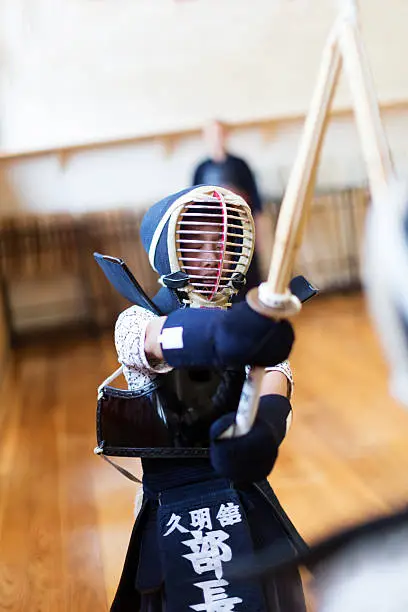The Japanese samurai sword, especially the katana, is renowned worldwide not only as a weapon but as a symbol of skill, honor, and cultural identity. For centuries, these blades have represented more than just tools of warfare; they embody the values of the samurai warrior and the exceptional craftsmanship of Japanese artisans. The katana is a fusion of art and functionality, admired for both its elegance and effectiveness. This article delves into the history, crafting process, and deep cultural significance of the iconic samurai sword.
Origins of the Samurai Sword: From Early Designs to Mastery
The history of Japanese swords begins in the ancient period, with early designs emerging as far back as the 8th century. The initial straight-edged blades were primarily designed for thrusting, but by the Kamakura period (1185–1333), a crucial shift occurred. Swordsmiths began creating curved blades that would later define the katana. This curve was not just for aesthetics but provided superior cutting performance, making the katana the weapon of choice for samurai warriors.
As the samurai class gained prominence during the Kamakura and Muromachi periods (1185–1573), their swords became an integral part of their identity. The katana’s design evolved to meet both the needs of the battlefield and the warrior’s ethical code. As these blades grew in sophistication, so did the skills required to craft them, with swordsmithing becoming a revered craft passed down through generations.
Forging a Samurai Sword: A Time-Honored Tradition
Creating a traditional samurai sword is a multi-step, meticulous process that blends artistry with metallurgy. The first stage in forging a katana begins with tamahagane, a special type of steel derived from iron sand. The smelting of tamahagane is done in a clay furnace called a tatara, a process that can take days and requires precise control of temperature to produce steel of the highest quality.
Once the raw material is ready, the tamahagane is folded multiple times, sometimes over 10 or 15 times, to refine its properties. This folding process is essential for creating a strong yet flexible blade. The folding helps to remove impurities and evenly distribute carbon throughout the metal, resulting in a blade that is not only durable but also visually striking with its unique grain pattern, known as hada.
The next stage involves shaping and heat treatment. The swordsmith coats the blade with a special clay mixture, leaving the edge exposed. The blade is then heated to high temperatures and quenched in water, which rapidly cools the metal and hardens the edge. This process gives the sword its characteristic curve, as the different cooling rates between the hardened edge and the softer spine cause the blade to bend slightly. The result is a sharp, resilient edge combined with a flexible spine, ideal for both cutting and durability.
Key Elements of a Japanese samurai sword
A Japanese samurai sword is more than just the blade. It is a collection of components that work together, each designed with care and precision. The primary parts of the sword include the tsuba (guard), tsuka (handle), kashira (pommel), menuki (decorative grips), and saya (scabbard). Each of these elements adds both practical function and aesthetic beauty to the sword.
Tsuba (Guard): The tsuba serves as a protective barrier between the blade and the wielder’s hand. It also adds a decorative touch, with intricate designs often reflecting the samurai’s family lineage or personal symbols. The tsuba’s design was not only about ornamentation but also about ensuring the sword’s balance and grip.
Tsuka (Handle): The handle of a katana is typically wrapped in rayskin (same) and covered with silk or leather for comfort and grip. The wrapping patterns were often personalized, with certain designs symbolizing different aspects of the warrior’s life, such as his family or his martial skills.
Kashira (Pommel): The kashira is the cap at the end of the handle, and like the tsuba, it was often elaborately decorated, offering both balance to the sword and a finishing touch to its visual appeal.
Saya (Scabbard): The saya, or scabbard, is designed to house the sword when it is not in use. Often made from wood and lacquered for protection, the saya could be richly adorned with family crests or symbolic imagery, showing the owner’s status and heritage.
Cultural and Spiritual Value of the Japanese samurai sword
For the samurai, the sword was far more than just a weapon. It was seen as an extension of the warrior’s soul, a powerful symbol of his character, and a representation of his personal and family honor. A samurai’s relationship with his sword was deeply spiritual. The blade was treated with reverence, cleaned regularly, and maintained with great care. The act of sword maintenance was a ritual, symbolizing discipline and self-control, core tenets of the samurai code of conduct, bushido.
The sword was also central to the samurai’s worldview. It was believed that the sword’s edge represented the samurai’s ability to cut through the distractions of life and focus on his higher purpose. The act of drawing the sword, iaigoshi, was a practice in both martial skill and mental clarity. Even outside of battle, the sword was considered a guardian of the samurai’s moral integrity.
Moreover, samurai swords were often passed down as heirlooms, preserving family legacy and honor for generations. These swords held significant emotional value, often regarded as sacred objects that connected the wielder to his ancestors.
The Samurai Sword in Modern Times
Although the samurai class ceased to exist following the Meiji Restoration in the late 19th century, the katana remains a cherished symbol of Japanese culture. The skill of swordsmithing has been preserved by a small group of artisans who continue to produce katana using traditional methods. These modern swords are often made for collectors or ceremonial purposes, maintaining the historical legacy of the blade.
The samurai sword also continues to inspire popular culture worldwide. From films and television shows to video games and literature, the katana has become synonymous with strength, precision, and honor. Its continued presence in martial arts, such as kendo and iaido, further cements the sword’s role in preserving the philosophy of the samurai.
In Japan, owning a traditional katana is seen as a way of connecting with the country’s cultural heritage, and it is regarded with great respect. Many collectors and martial artists seek out authentic, handcrafted swords, recognizing the immense skill and tradition behind each blade.

